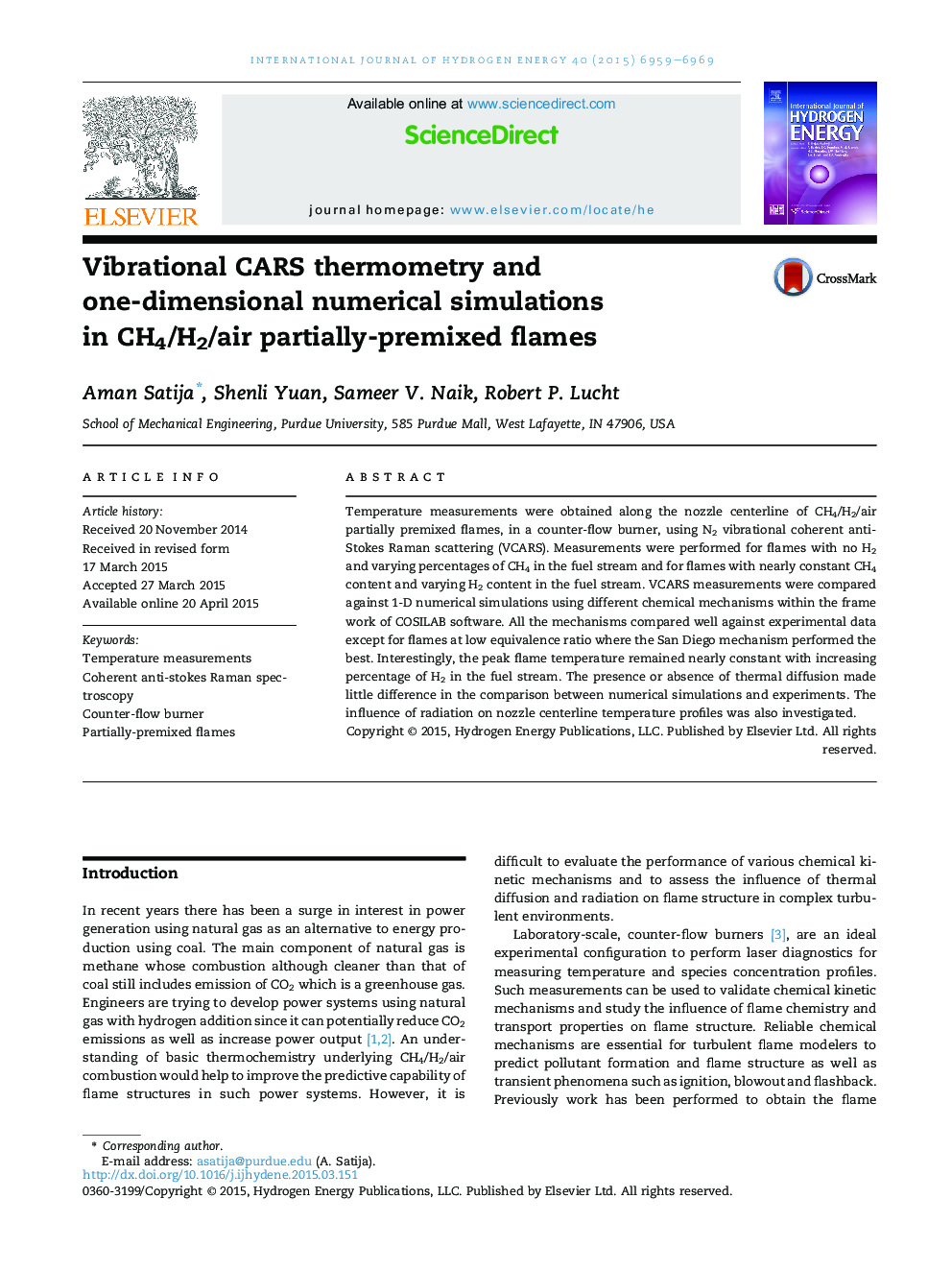| Article ID | Journal | Published Year | Pages | File Type |
|---|---|---|---|---|
| 1271205 | International Journal of Hydrogen Energy | 2015 | 11 Pages |
•VCARS thermometry and 1-D COSILAB simulations in CH4/H2/air partially premixed flames.•San Diego mechanism performed best and Giovangigli's reduced mechanism did well.•Peak flame temperature insensitive but 1-D profiles sensitive to equivalence ratio (ϕ).•Peak flame temperature insensitive but 1-D profiles sensitive to percentage of H2 in the fuel stream.•1-D temperature profiles insensitive to thermal diffusion and radiation models except at low ϕ.
Temperature measurements were obtained along the nozzle centerline of CH4/H2/air partially premixed flames, in a counter-flow burner, using N2 vibrational coherent anti-Stokes Raman scattering (VCARS). Measurements were performed for flames with no H2 and varying percentages of CH4 in the fuel stream and for flames with nearly constant CH4 content and varying H2 content in the fuel stream. VCARS measurements were compared against 1-D numerical simulations using different chemical mechanisms within the frame work of COSILAB software. All the mechanisms compared well against experimental data except for flames at low equivalence ratio where the San Diego mechanism performed the best. Interestingly, the peak flame temperature remained nearly constant with increasing percentage of H2 in the fuel stream. The presence or absence of thermal diffusion made little difference in the comparison between numerical simulations and experiments. The influence of radiation on nozzle centerline temperature profiles was also investigated.
